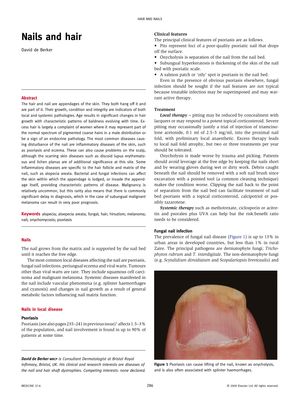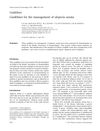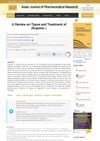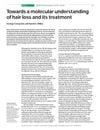Nails and Hair
May 2009
in “
Medicine
”

TLDR Hair and nails can help diagnose diseases, with nail issues often linked to skin conditions and hair loss having various causes and treatments.
The document from 2009 highlights the diagnostic value of hair and nails in identifying local and systemic diseases, including endocrine pathologies indicated by patterns of baldness and excess hair. Nail diseases are often linked to skin conditions such as psoriasis, which affects 1.5-3% of the population and can involve the nails in up to 90% of cases, and eczema, while alopecia areata, an autoimmune condition, specifically targets hair follicles and the nail matrix. Fungal nail infections are common, affecting up to 13% of urban populations in developed countries, with treatments like terbinafine showing a 55% success rate for toenail infections. Hair loss can be caused by disruptions in the hair cycle, with conditions like telogen effluvium, alopecia areata, which may lead to complete scalp or body hair loss, and scarring alopecias due to follicle destruction from diseases like LPP and DLE. Treatments for hair loss vary from topical steroids to systemic medications, while fungal scalp infections in children are treated with oral antifungals. The document also notes the occurrence of systemic diseases in the nails and discusses hirsutism, excess terminal hair in women, often treated with anti-androgens or physical methods like laser/IPL.



